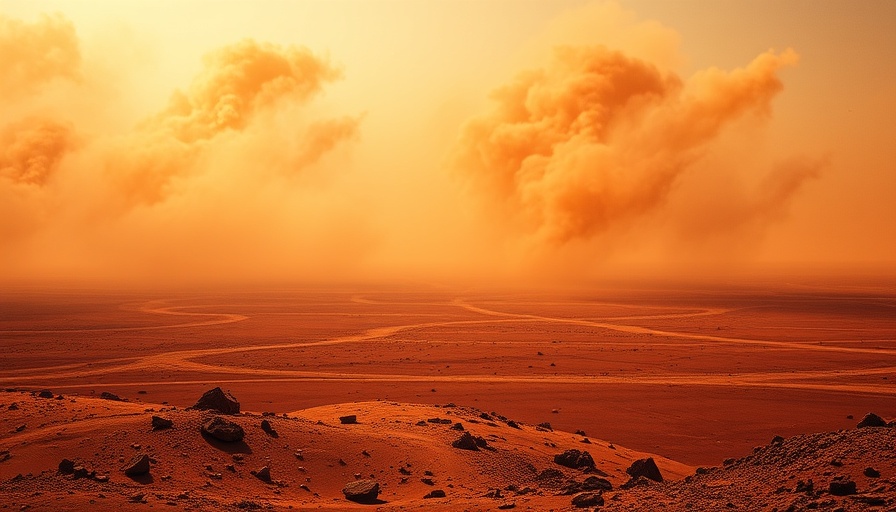
Understanding the Health Risks of Martian Dust for Future Astronauts
As space agencies gear up to send humans to the Red Planet, researchers are sounding the alarm on a less-discussed threat: Martian dust. Recent research from the University of Colorado Boulder indicates that long-term exposure to the fine particles of dust on Mars could expose astronauts to respiratory issues, thyroid disease, and more serious health problems. With these implications in mind, it’s imperative for the space community to focus on how best to protect astronauts against these risks.
The Unique Composition of Martian Dust
Breathe in, and you might unwittingly inhale a cocktail of harmful compounds. The study published in GeoHealth reveals that Martian dust contains a host of dangerous elements—silicates, iron oxides, and troublesome perchlorates among them. While many of these elements are found in trace amounts, astronauts' prolonged exposure during their extensive missions could elevate the risk of health complications. It's a stark reminder that even in the quest for exploration, celestial environments can pose unexpected dangers.
Historical Context: Lessons from the Moon
The danger of fine particulate dust isn’t new; astronauts from the Apollo missions reported experiencing runny eyes and sore throats after exposure to lunar dust. Current research suggests that Martian dust could have even more serious health implications due to its more complex and varied composition. Understanding the nuanced differences in dust types between the Moon and Mars is vital for developing safe operational protocols for future missions.
Long-Term Implications for Extended Mars Missions
NASA plans for the first humans to live on Mars for about a year and a half, exposing astronauts to Martian dust regularly. Brian Hynek, a co-author of the recent study, emphasizes that accurate characterization of this dust is essential—living in environments with regular dust storms poses compounded health risks. The consequences of this exposure could manifest long after astronauts return to Earth, raising questions about the long-term effects of Martian dust on health.
Addressing Future Risks: The Need for Technological Solutions
Fortunately, there is a silver lining: these risks are identifiable, and solutions exist. Lead author Justin Wang advocates for innovative technologies specifically aimed at combating dust-related health threats in Mars missions. Developing high-efficiency filtration systems or protective gear could help mitigate the dangers associated with dust exposure, ensuring the safety and well-being of Mars explorers.
Future Predictions: The Ongoing Exploration Landscape
The ongoing surge in space exploration—coupled with public interest in Martian colonies—highlights a crucial need for comprehensive health risk assessments. Organizations like NASA and private space enterprises must prioritize the health and safety of astronauts by investing in the technology necessary to avoid Martian dust hazards both in the short term and in long-term missions. Collaboration among scientists, engineers, and medical professionals will be crucial to facilitating this advancement.
Concluding Thoughts: Preparing for What Lies Ahead
With humanity on the brink of taking significant steps towards planetary exploration, the implications of Martian dust cannot be overlooked. The research emerging from CU Boulder offers critical insight as we prepare for the next frontier. Companies and professionals across industries must recognize the importance of addressing this complex science and investing in technologies that will make space exploration safer for astronauts. As we move closer to colonizing Mars, we must ensure we are adequately prepared to combat cosmic health challenges.
 Add Row
Add Row  Add
Add 




 Add Row
Add Row  Add
Add 

Write A Comment